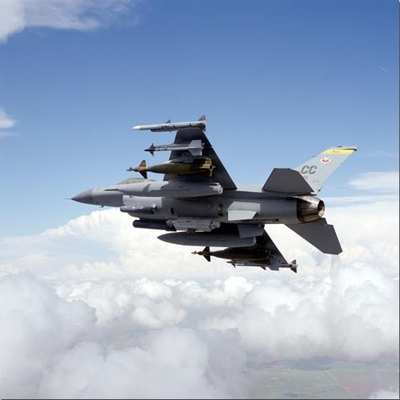Thu, Jul 17, 2003
 Astronics Corporation has been awarded a
follow-on contract from the U.S. government to supply spares and
replacement parts for the F-16 night vision instrumentation program
for which Astronics in recent years converted over 1,100 aircraft
to night vision capability. It also announced a development
contract for an undisclosed foreign government to upgrade the
lighting systems of certain fighters in their military fleet for
compatibility with night vision goggles.
Astronics Corporation has been awarded a
follow-on contract from the U.S. government to supply spares and
replacement parts for the F-16 night vision instrumentation program
for which Astronics in recent years converted over 1,100 aircraft
to night vision capability. It also announced a development
contract for an undisclosed foreign government to upgrade the
lighting systems of certain fighters in their military fleet for
compatibility with night vision goggles.
The follow-on spares contract with the U.S. government provides
for Astronics to supply spare parts for certain critical components
for up to ten years for the U.S. F-16 fleet, including such devices
as cockpit control assemblies, avionics keyboards and indicator
units. During the period 1999 through 2002, over 1,100 F-16
Fighting Falcons were converted with Astronics' lighting systems to
allow for the use of night vision goggles in the aircraft. The
conversion provides for the lighting systems to emit minimal
amounts of infrared energy and requires significant modification or
replacement of cockpit and external lighting by Astronics'
products, the leading technology for this type of application. The
spares contract value will depend on component failure rates
experienced by the U.S. Air Force. (This contract is in addition to
the F-16 spares contract valued at an estimated $30 million over a
ten-year period that was announced January 22, 2002.)
Astronics was also recently awarded a developmental contract
with an undisclosed foreign military to provide the night vision
instrumentation systems (NVIS) for its fleet of fighters. The award
covers certain design and development activities and two initial
ship sets of hardware. The contract is being administered through
the U.S. government's foreign military sales program.

James Kramer, Vice President of Astronics' Luminescent Systems
operation, commented, "Clearly our expertise with adapting manned
military equipment for the use of night vision goggles is
recognized world wide. The success of the conversion of the U.S.
F-16 fleet to night vision capability with our technology has
provided us in-roads to many other fleets around the world, as well
as to other applications such as in ground vehicles. With this
technology and the incremental technology we have developed through
our experience with this program, we continue to uncover solid
market opportunities, even in today's difficult market. We believe
we have much opportunity to continue to apply and advance our
technology, to expand the content we provide for every aircraft and
to continue to develop new approaches with such aircraft as the
Joint Strike Fighter and even still with the F-16, a versatile,
multi-role fighter that continues to be in high demand around the
world."
More News
“These new aircraft strengthen our ability to respond quickly, train effectively and support communities nationwide. Textron Aviation has been a steadfast supporter in helpin>[...]
From 2011 (YouTube Edition): Rugged, Legendary, STOL Twin Makes A Comeback The de Havilland Twin Otter is an airplane with a long history, and it gained a reputation as a workhorse>[...]
A Wind Gust Lifted The Right Wing And The Airplane Turned To The Left Analysis: The pilot was departing from a 2,395-ft-long by 50-ft-wide turf runway. The pilot reported that afte>[...]
Have A Story That NEEDS To Be Featured On Aero-News? Here’s How To Submit A Story To Our Team Some of the greatest new stories ANN has ever covered have been submitted by our>[...]
Braking Action Advisories When tower controllers receive runway braking action reports which include the terms “medium," “poor," or “nil," or whenever weather con>[...]
 Aero-News: Quote of the Day (12.18.25)
Aero-News: Quote of the Day (12.18.25) Classic Aero-TV: Viking Twin Otter 400--Bringing the DHC-6 Back Into Production
Classic Aero-TV: Viking Twin Otter 400--Bringing the DHC-6 Back Into Production NTSB Final Report: Rans Employee Flying Club Rans S-6ES Coyote II
NTSB Final Report: Rans Employee Flying Club Rans S-6ES Coyote II ANN FAQ: Submit a News Story!
ANN FAQ: Submit a News Story! ANN's Daily Aero-Term (12.18.25): Braking Action Advisories
ANN's Daily Aero-Term (12.18.25): Braking Action Advisories



